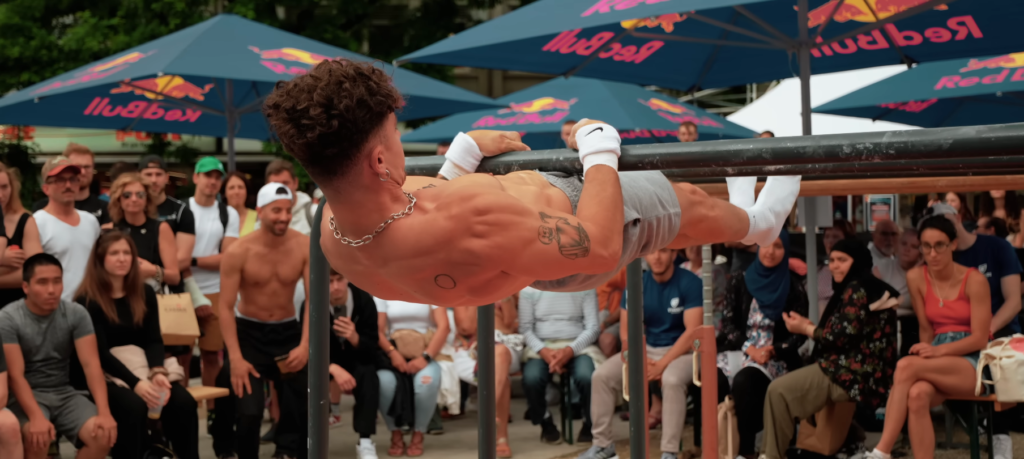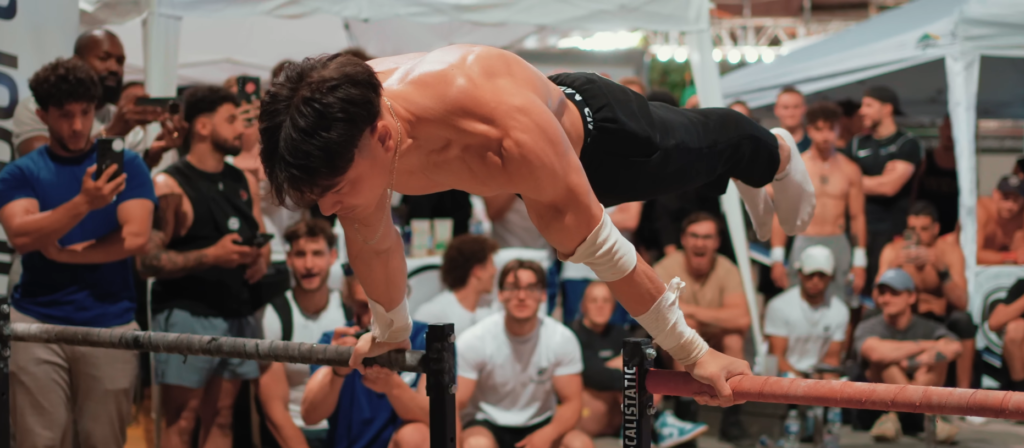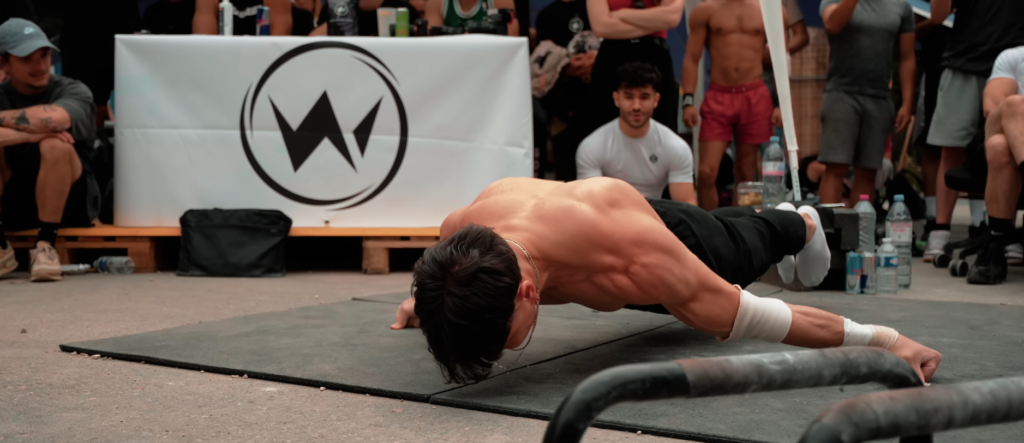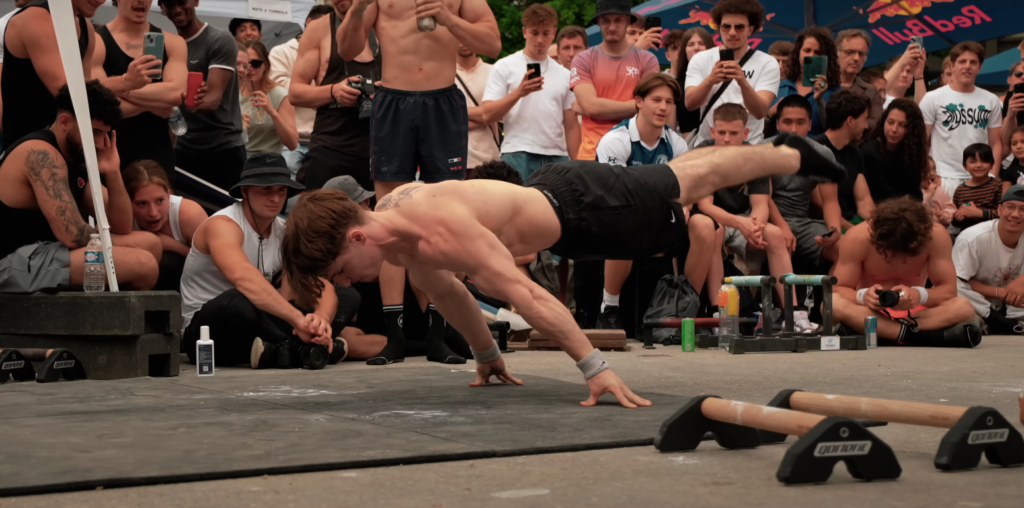The Ultimate Showdown: Why You Should Try Calisthenics Competitions
Calisthenics competitions are becoming a global sensation, drawing athletes who want to push their limits in strength, agility, and control—all with bodyweight exercises. But what exactly makes calisthenics competitions unique, and why are more athletes joining? In this post, we’ll dive into what calisthenics competitions entail, how to prepare, and the benefits of participating. If you’re passionate about bodyweight training, calisthenics competitions may be the perfect challenge.

What are Calisthenics Competitions?
Calisthenics competitions test the strength, endurance, flexibility, and skill of athletes through a series of bodyweight exercises. These events often include categories like freestyle routines, where athletes perform advanced moves on bars and rings, and strength events, where the focus is on feats like pull-ups, muscle-ups, and planches.
Popular Types of Calisthenics Competitions
Freestyle Competitions
Freestyle calisthenics competitions showcase creativity and athleticism, where athletes perform advanced moves like 360-degree spins and muscle-ups. The goal is to display unique styles and skills, combining fluidity and control.Strength-Based Competitions
In strength-focused calisthenics competitions, athletes are judged based on their ability to complete exercises that require high levels of strength, like weighted pull-ups and muscle-ups. These events emphasize raw power and endurance.Endurance-Based Competitions
Endurance-focused competitions challenge participants to perform exercises for as long as possible or reach the highest rep count. Exercises like push-ups, pull-ups, and dips are common here, testing how long competitors can sustain intense routines.
Why Join Calisthenics Competitions?
Joining calisthenics competitions offers a wealth of benefits, from physical conditioning to personal growth. Here are some compelling reasons to consider participating:
Test Your Limits
Competing pushes you to your maximum potential, helping you identify areas for improvement and set new personal records.Community and Camaraderie
Calisthenics competitions foster a supportive environment. Participants encourage one another, creating a community of like-minded athletes passionate about bodyweight fitness.Build Confidence and Discipline
Competing requires dedication, mental strength, and a focused mindset. Training for a calisthenics competition develops self-discipline and boosts confidence as you accomplish goals.Opportunity to Learn
Competitions bring together experienced athletes from diverse backgrounds. Watching others perform and exchanging tips with competitors can help you discover new techniques, exercises, and approaches to training.

How to Prepare for Calisthenics Competitions
Preparing for calisthenics competitions involves structured training, focusing on the skills required in the event, improving strength and endurance, and refining form. Here’s a guide on how to prepare effectively:
Set Clear Goals
Determine your focus within calisthenics competitions. If you’re entering a freestyle competition, prioritize skill-based moves. For strength events, increase your rep range and build up to advanced exercises.Structured Training Plan
Create a training program tailored to the specific events in calisthenics competitions. For strength-based events, increase reps and incorporate exercises like weighted pull-ups. For freestyle, train on bars and rings to practice transitions and smooth movement.Conditioning and Mobility
Building mobility is crucial for fluidity in calisthenics. Regularly incorporate dynamic stretching and mobility drills, especially for shoulders, hips, and wrists. Flexibility allows for better control and balance, essential in competitions.Practice Your Routine
For freestyle calisthenics competitions, it’s beneficial to practice a routine that you’ll perform during the event. This gives you confidence and lets you gauge how much time each element takes. You can make adjustments as needed and focus on smooth transitions.Focus on Rest and Recovery
Training for calisthenics competitions can be intense. Recovery days help prevent burnout and allow muscles to repair, ensuring you stay at your best.
Essential Skills for Success in Calisthenics Competitions
To succeed in calisthenics competitions, focus on key skills that judges look for, such as:
Strength and Endurance
High reps in exercises like pull-ups and muscle-ups, as well as the ability to hold static moves like planches, demonstrate strength and endurance.Control and Form
Judges value clean form and controlled movements over rushed or sloppy execution. Practicing slow and controlled reps in your workouts can help you stand out in calisthenics competitions.Balance and Flexibility
Skills like handstands and holds require a strong sense of balance and body awareness. Practicing exercises that develop core strength and stability will improve your performance in competitions.Creativity in Freestyle Events
If you’re entering a freestyle calisthenics competition, creativity is key. The judges appreciate routines that blend power moves with creative transitions and unique style.

What to Expect at Your First Calisthenics Competition
Entering your first calisthenics competition can be both exciting and challenging. Here’s a brief overview of what to expect:
- Check-in and Rules Review: Most events start with a briefing, where judges explain the rules, timing, and scoring criteria.
- Warm-Up and Preparation: Many competitions provide a warm-up area for athletes to stretch, practice moves, and mentally prepare.
- Event Format: You’ll likely participate in multiple rounds, depending on the event type. In freestyle, you’ll perform a timed routine; in strength events, you’ll execute specific exercises for reps.
- Judging and Scoring: Judges score based on strength, creativity, control, and endurance, depending on the competition type.
Tips for a Successful Calisthenics Competition
Success in calisthenics competitions relies on preparation, focus, and strategy. Here are some final tips:
Stay Focused
Keep a calm mind and focus on your breathing. Mental clarity can help you execute each movement with control and confidence.Conserve Energy
If your event has multiple rounds, pace yourself to avoid exhaustion early on. Balance effort with endurance to maintain energy throughout.Warm Up Thoroughly
Proper warm-up prepares your body and minimizes the risk of injury. Use dynamic stretches to activate key muscles and prevent strain.Stay Positive and Learn
Calisthenics competitions are as much about growth as they are about winning. Even if you don’t place, take it as a learning experience and celebrate your accomplishments.

Conclusion – Calisthenics Competitions
Whether you’re aiming to showcase your skills or simply experience the thrill of competition, calisthenics competitions are an incredible opportunity. They offer a way to measure progress, connect with other athletes, and push personal limits. If you’re passionate about bodyweight training, joining a calisthenics competition can be a rewarding and unforgettable experience.
Calisthenics competitions bring out the best in athletes, showcasing the power, creativity, and discipline of bodyweight training. Are you ready to take the plunge?
